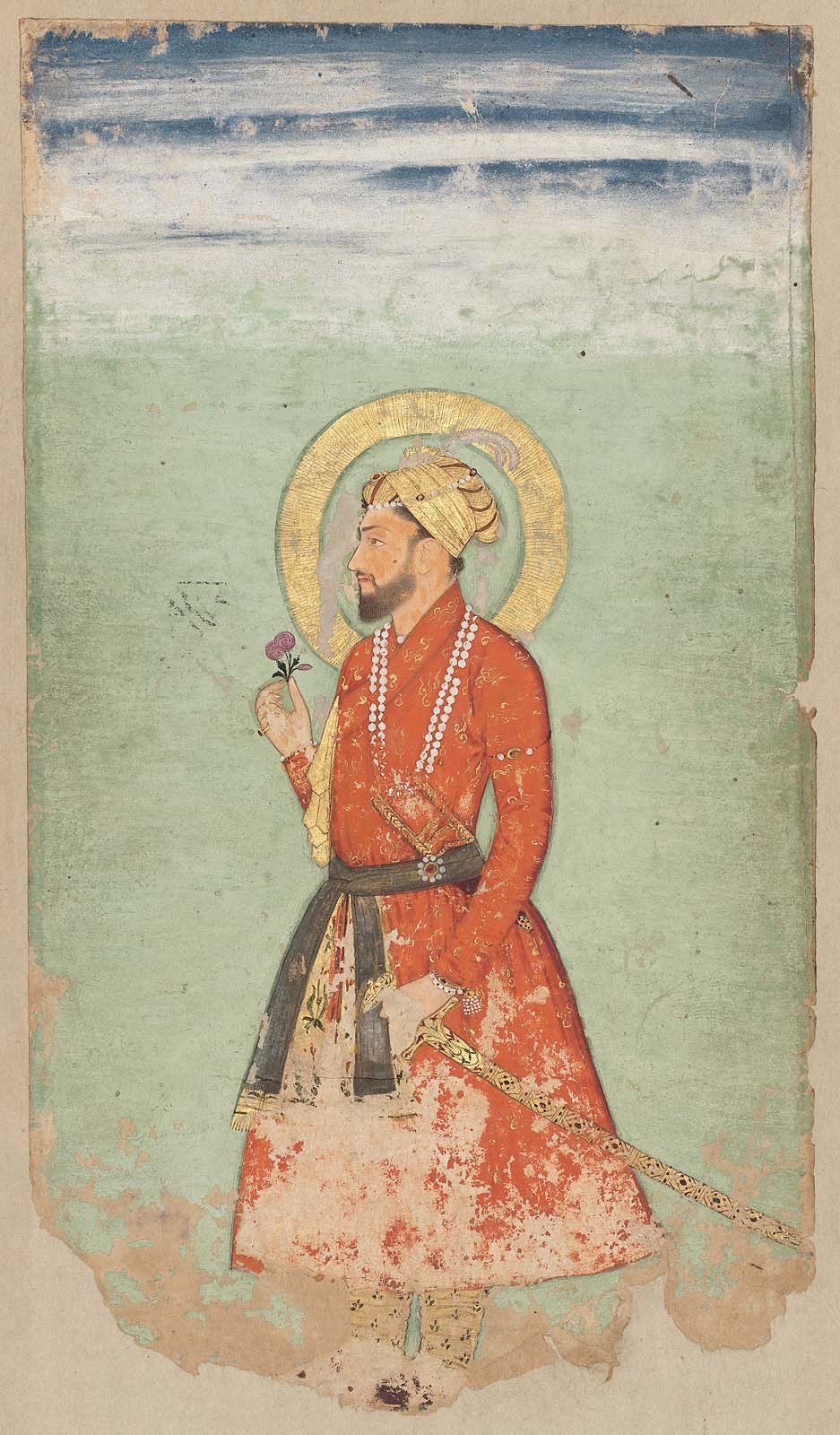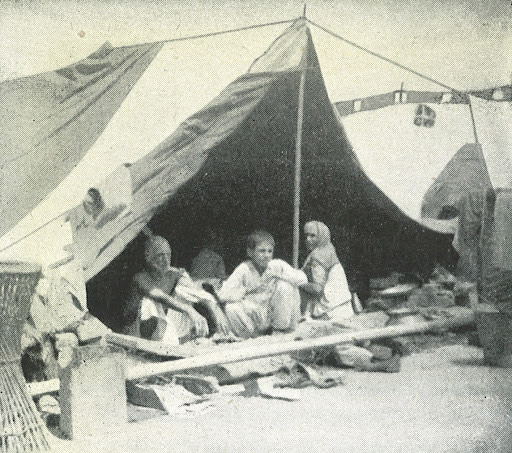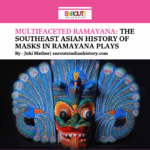Dara Shikoh Library: A Sanctuary for Art, Grief, and Partition Memories
- EIH User
- August 16, 2024

Dara Shikoh Library
The memories of Partition emerge in scattered fragments, a chaotic mosaic of disrupted lives and broken histories. These memories are never whole—how could they be? They are as fragmented and evolving as the retellings themselves and echo the poignant portrayal in “Toba Tek Singh”,
“Opad di gud gud di moong di dal di laltain di Hindustan te Pakistan di dur fitey munh.”
where the protagonist’s plight in a mental asylum during Partition critiques the madness that gripped the subcontinent. At the Dara Shikoh Library, such narratives serve as a solemn reminder of the human toll of division. The Partition Museum housed within the library offers a space where art and grief converge, reflecting the complex emotional landscape of Partition narratives in Delhi.
As India approaches its 78th Independence Day, we find ourselves at a crossroads where history, memory, and future aspirations converge. “Partition is not just a line drawn on a map but a scar etched in our collective consciousness,” a sentiment that resonates deeply with the Partition narratives in Delhi. While coping with loss and displacement, people documented and expressed their memories of the event in various ways. Now, these memories have found a new home in the form of artwork and memorabilia at The Partition Museum in Delhi, where art and grief intersect poignantly. This reflection is anchored in the Dara Shikoh Library, with the Dara Shikoh Museum serving as a contemporary testament to our nation’s rich, albeit turbulent, past.

Portrait Of Dara Shikoh
Image courtesy: MFA Boston
From Mughal Library to Partition Museum
The Dara Shikoh Library, nestled in the heart of Delhi, is a testament to the syncretic vision of the Mughal prince it is named after. Dara Shikoh, the eldest son of Shah Jahan, is celebrated for his scholarly efforts to unite Hindu and Islamic traditions. Originally a private library of the Mughal prince, the Dara Shikoh library fell into disrepair after Dara Shikoh’s death and was later handed over to Donna Juliana, the Portuguese governess of the Mughal children. In the 18th century, it was acquired by Nawab Safdarjung, then captured by Sir David Ochterlony and repurposed as a British residency before becoming a municipal school. The complex was eventually incorporated into Ambedkar University Delhi. In 2011, the Delhi government, led by Sheila Dikshit, renovated the library into a state museum in partnership with the Indian National Trust for Art and Cultural Heritage (INTACH). The museum houses over 2,200 artifacts from the Mughal era, including coins and statues. Beyond its historical significance, the library has evolved into much more than just a historical repository, hoarding partition narratives in Delhi; it is now a Partition museum, where art, grief, and the memories of Partition converge, creating a sanctuary for reflection and healing.
Preserving Dara Shikoh’s Legacy
The Dara Shikoh Library continues to honor the legacy of its namesake through the museum’s diverse offerings. The museum prominently features a Dara Shikoh Auditorium, dedicated to exploring the profound impact of Sufi traditions. They host exhibitions that delve into the rich tapestry of Sufi heritage, bridging the past with contemporary reflections.
The library itself, a testament to British Mughal architecture, stands as a remarkable relic of a bygone era. Its restoration under the ‘Adopt a Heritage’ scheme, facilitated by the Delhi Government and the Arts and Cultural Heritage Trust (TAACHT), underscores a commitment to preserving this architectural marvel. In this unique setting, the museum not only highlights Dara Shikoh’s syncretic vision but also serves as a space where Partition narratives in Delhi are thoughtfully explored. Through the intersection of art and grief, the museum presents a nuanced reflection on the emotional complexities of Partition. Visitors encounter a rich blend of historical artifacts and contemporary art, all contributing to a deeper understanding of the human cost of division.

Dara Shikoh Library, Delhi
Image courtesy: TAACHT Archives
Inaugurated on May 18 by Delhi’s Art & Culture Minister Atishi Marlena within the Ambedkar University campus in Kashmere Gate, the Dara Shikoh Partition Museum is envisioned as the “people’s museum,” according to Kishwar Desai, chairperson of The Arts and Cultural Heritage Trust. Desai described the museum as “a long-time dream,” emphasizing that it is built through the memories and memorabilia carried across borders by those who lived through the Partition. Situated within the Dara Shikoh Library, the museum aims to offer a nuanced narrative of the Partition of 1947, focusing on the human stories that emerged from this cataclysmic event, rather than just the political and territorial changes. Through a collection of personal artifacts, oral histories, and multimedia exhibits, the museum seeks to preserve and present the Partition narratives in Delhi, providing visitors with a deeper understanding of its impact on the subcontinent. The integration of art and grief in the Partition Museum adds a poignant dimension to this exploration, reflecting the emotional depth of the experiences documented.
Why Delhi Was Chosen for the Partition Museum
Ashwini Pai Bahadur, Director of The Arts and Cultural Heritage Trust (TAACHT) emphasized that the objective of the Dara Shikoh Library’s Partition Museum is to highlight and meticulously document the profound effects of the Partition in India. She noted, “Before all the Partition survivors leave this world, we want to capture their experiences, interactions, and memories of the event.” This museum, situated within the Dara Shikoh Library, not only narrates the broader history of the Partition but places a particular focus on Delhi through the Partition narratives in Delhi. Kishwar Desai highlighted the immense scale of displacement, remarking, “Three lakhs of Hindu and Sikh refugees migrated within a week.” Delhi transformed into a vast refugee camp, with areas like Khan Market, Nizamuddin, Lajpat Nagar, Karol Bagh, and Kingsway Camp gradually evolving into permanent colonies as they were regularized.

A snippet of a family living inside the Kingsway Refugee Camp.
Image Courtesy: TAACHT Archives
Many of the city’s monuments also served as temporary shelters for refugees during this period. The museum’s focus on Delhi reflects the city’s profound connection to Partition, with nearly 80% of its residents having some link to the event, whether they are Punjabis, Bengalis, Sindhis, or from other communities. The integration of art and grief in the Partition Museum underscores the emotional depth of this historical experience, offering a poignant reflection on the turbulence of the era. It brings to life the experiences of Delhi’s residents through their contributions of oral histories, shedding light on how migration and resettlement unfolded in the capital. Moreover, it explores how daily life in the city was irrevocably altered as the Partition progressed, intertwining art and grief within the museum’s exhibits to offer a poignant reflection on this turbulent period of history.

Delhi Guide Map, 1959.
Image Courtesy: TAACHT Archives
Exploring the Galleries: Exhibits and Artistry
The museum, located within the Dara Shikoh Library, is thoughtfully organized into seven distinct galleries, each guiding visitors through a specific period, phase, or event in history. At the entrance lies a cultural hub titled Partition in the Mind of the Artist, showcasing a collection of contemporary artworks that capture the essence of Partition narratives in Delhi. This section features pieces by renowned artists such as Satish Gujral, Kishan Khanna, Arpana Caur, and others, who have all interpreted the profound impact of Partition through their art. Among the highlights is a work by Delhi-based mixed media artist Debashish Mukherjee, who delves into themes of displacement and loss brought about by Partition. Additionally, Kashmiri artist Veer Munshi has created a powerful installation named The Fallen House, Also a Horse which includes a wooden sculpture, Zuljanah, loaded with skeletons and bones made in paper mache style, reflecting art and grief in the Partition Museum.

The gallery of migration at the Partition Museum in Delhi
Image courtesy: TAACHT Archives
The journey begins with the introductory gallery, where old newspapers are prominently displayed to elucidate the causes of Partition and the events of that tumultuous period. This gallery is adorned with large-scale portraits of Partition witnesses from Old Delhi, captured by artist Serena Chopra, whose mother was originally from Mardan in present-day Pakistan. The striking black-and-white photographs are paired with poignant testimonies from survivors, recounting their memories of Jawaharlal Nehru’s first speech from the Red Fort, stories of peaceful coexistence among diverse communities, and harrowing accounts of the violence that once tore through their neighborhoods.

Independence Pamphlet at the Partition Museum in Delhi
Image courtesy: TAACHT Archives
The second gallery delves into the harrowing documentation of migration. Ashwini Pai Bahadur explains, “We’ve installed a train here to symbolize how trains, during that time, became tragic targets of migration, arriving at stations in haunting silence, filled with the dead.” This installation captures the profound impact of the Partition narratives in Delhi, reflecting the tragic reality of displacement.
Another gallery, titled Gallery of Refuge, poignantly captures the theme of mass displacement, featuring artifacts that evoke the deep sense of loss experienced during the Partition. Among these, Veer Munshi’s The Fallen House, an evocative installation powerfully conveys the emotions of homelessness, preserving a haunting moment from the era. Complementing this, video art projections depict the wrenching separation of people from their heritage, further immersing visitors in the profound impact of displacement. These elements, along with artifacts like ration cards and the joint India-Pakistan passport, create a visceral narrative that brings to life the struggle to find refuge and rebuild amidst the chaos of Partition. The museum’s collection, situated within the Dara Shikoh Library, offers a deeply moving reflection on the human cost of migration, encapsulating the ordeals of those uprooted from their homes and the art and grief in the Partition Museum.
Among its notable features, the museum houses the Mianwali Gazette, a publication launched shortly after Partition and distributed among Mianwali (now in Pakistan) refugees across India. This newspaper plays an important testament to the era’s enduring spirit and continuity.

The Mianwali Gazette at the Partition Museum in Delhi
Image courtesy: TAACHT Archives
The Partition Museum also showcases a rich collection of material artifacts, many belonging to those displaced by the Partition. From postcards to early Indo-Pak passports, these items provide a tangible link to the past. The Gallery of Hope and Courage highlights personal artifacts, including photographs and mementos from individuals who revisited their ancestral homes and places in Pakistan. Featured items include a commendation certificate awarded to a Lahore policeman for his efforts to control Congress agitation in August 1942, a passport used for travel between India and Pakistan in the early days, and a wedding card commemorating the last peaceful ceremony held in Lahore before the partition. The exhibit also uses scattered bangles, clothing, and shoes, along with simulated blood spots, to convey the deep emotional impact of the violence experienced by those who lost loved ones.
Additionally, a gallery dedicated to refugees depicts the dire conditions in Delhi’s makeshift camps, including Purana Qila, with displaced people. A ration card, symbolizing their only form of identity, is displayed alongside a sculpture representing the struggle to rebuild homes while transporting belongings on a bicycle.

Ration Card at the Partition Museum in Delhi
Image courtesy: TAACHT Archives
Preserving Voices of the Past: The Oral History Narratives Project
The museum’s journey is unified by a project called the Oral History Narratives, spearheaded by the Trust. This initiative captured the oral histories of those who experienced the Partition firsthand but have since passed away. Among these accounts is that of Kishwar Desai’s father, who witnessed a historic meeting between Noor Jehan and Lata Mangeshkar near the border. Noor Jehan, a renowned singer who left India after the Partition, had once been honored by Lata Mangeshkar’s performance in her youth. Visitors to the museum, located within the Dara Shikoh Library, can explore these poignant stories through recorded interviews on headphones throughout the galleries, adding depth to the Partition narratives in Delhi.
Survivor interviews provide powerful testimonies of communal harmony before the Partition, the upheaval that followed its announcement, and the struggles endured on both sides of the India-Pakistan border. These personal stories are presented on television screens across the museum, highlighting the impact of the Partition on different societal groups, including the Dalits. The integration of these stories with art and grief in the Partition Museum underscores the emotional and historical significance of the era.
Desai emphasized the importance of authenticity in these recordings, noting that after 75 years of silence, there is a deep desire among survivors to share their experiences and the suffering they endured. The Amar Nath Sehgal Oral History Project, in collaboration with the Partition Museum, features over 200 narratives from individuals who navigated the difficult journeys of the 1947 Partition, whether in caravans or on foot.

Oral histories of survivors have been documented via several audiovisual recordings.
Image courtesy: Hindustan Times
Virtual Reality: Immersive Exploration of Partition
Beyond its physical exhibits, the Partition Museum, situated within the Dara Shikoh Library, embraces cutting-edge technology to enrich historical understanding. The museum features an engaging VR experience created by Project Dastaan, titled Child of Empire. This innovative animated docu-drama transports visitors into the heart of the Partition through the eyes of two individuals: Ishar Das Arora, a Hindu Indian who moved from Pakistan to India, and Iqbal-ud-din Ahmed, a Muslim Pakistani who made the reverse journey. As they share their childhood memories, the narrative unfolds through an interactive board game, offering a deeply immersive and personal perspective on the Partition narratives in Delhi. This VR experience integrates art and grief in the Partition Museum, providing a modern, interactive means to engage with the profound emotional and historical aspects of this pivotal event.

Project Dasraan at the Partition Museum in Delhi
Image Courtesy: TAACHT Archives
Partition, with its horrific legacy, severed not only geographical boundaries but also deep-rooted cultural and emotional ties. Yet, within the historic walls of the Dara Shikoh Library, one finds an enduring beacon from a time when coexistence wasn’t just possible but celebrated. The library’s architecture, a harmonious blend of Persian and Indian styles, stands as a poignant metaphor for the unity that was violently disrupted during Partition. In this space, the Partition narratives in Delhi come alive, offering a sanctuary where grief and loss are thoughtfully confronted through the art and grief in the Partition Museum, turning the library into a space for solace and reflection.
As Independence Day approaches, the Dara Shikoh Library invites us to reflect on our complex history with a renewed sense of unity and reconciliation.
In the words of Faiz Ahmed Faiz, whose verses capture both the sorrow of Partition and the hope for healing:
“This stained dawn, this daybreak smeared with sorrow,
This is not that long-awaited morning, this is not that place where light has struck,
The caravan of desires has yet to reach its destination.”
These haunting lines echo the essence of the museum, capturing the enduring grief and unfulfilled dreams left in the wake of Partition. Through the Partition narratives in Delhi, the Dara Shikoh Library and its Partition Museum invite us to explore these emotions, blending history with a call for healing, hope, and understanding.
References:
https://www.partitionmuseum.org/support-the-partition-museum/
https://www.cntraveller.in/
https://www.newindianexpress.com/
Image References:
https://mfas3.s3.amazonaws.com/objects/SC194458.jpg
https://assets.cntraveller.in/photos/64648739f0771fd865ff7632/master/w_1600,c_limit/DSL.jpeg
https://enz01e.n3cdn1.secureserver.net/wp-content/uploads/2023/05/fcszacs.jpg
https://enz01e.n3cdn1.secureserver.net/wp-content/uploads/2023/05/unnacdf.jpg
https://enz01e.n3cdn1.secureserver.net/wp-content/uploads/2023/05/ucsz-1.jpg
https://enz01e.n3cdn1.secureserver.net/wp-content/uploads/2023/05/unnamedgrty.jpg
https://assets.cntraveller.in/photos/6464872ef0771fd865ff762e/master/w_1600,c_limit/Mianwali%20Gazette%20donated%20by%20Subash%20Gulati.JPG
https://assets.cntraveller.in/photos/6464872df0771fd865ff762c/master/w_1600,c_limit/Ration%20Card%20donated%20by%20Yashvir%20Dutta.jpg
https://www.hindustantimes.com/ht-img/img/2023/05/18/550×309/205a60b0-f3e1-11ed-9c1e-4c9e97cd8347_1684406586097.jpg
https://enz01e.n3cdn1.secureserver.net/wp-content/uploads/2023/05/image-7.png
- Art and grief in Partition museums
- Artistic expressions of Partition
- Artistic refuge during Partition
- Cultural heritage of Dara Shikoh Library
- Dara Shikoh Library art exhibits
- Dara Shikoh Library cultural significance
- Dara Shikoh Library heritage site
- Dara Shikoh Library history
- Delhi library Partition memories
- Grief and memory in Partition literature
- Historical libraries in Delhi
- Literary heritage of Dara Shikoh
- Partition Museum Delhi insights
- Partition narratives in Delhi
- Preserving Partition history in Delhi



















